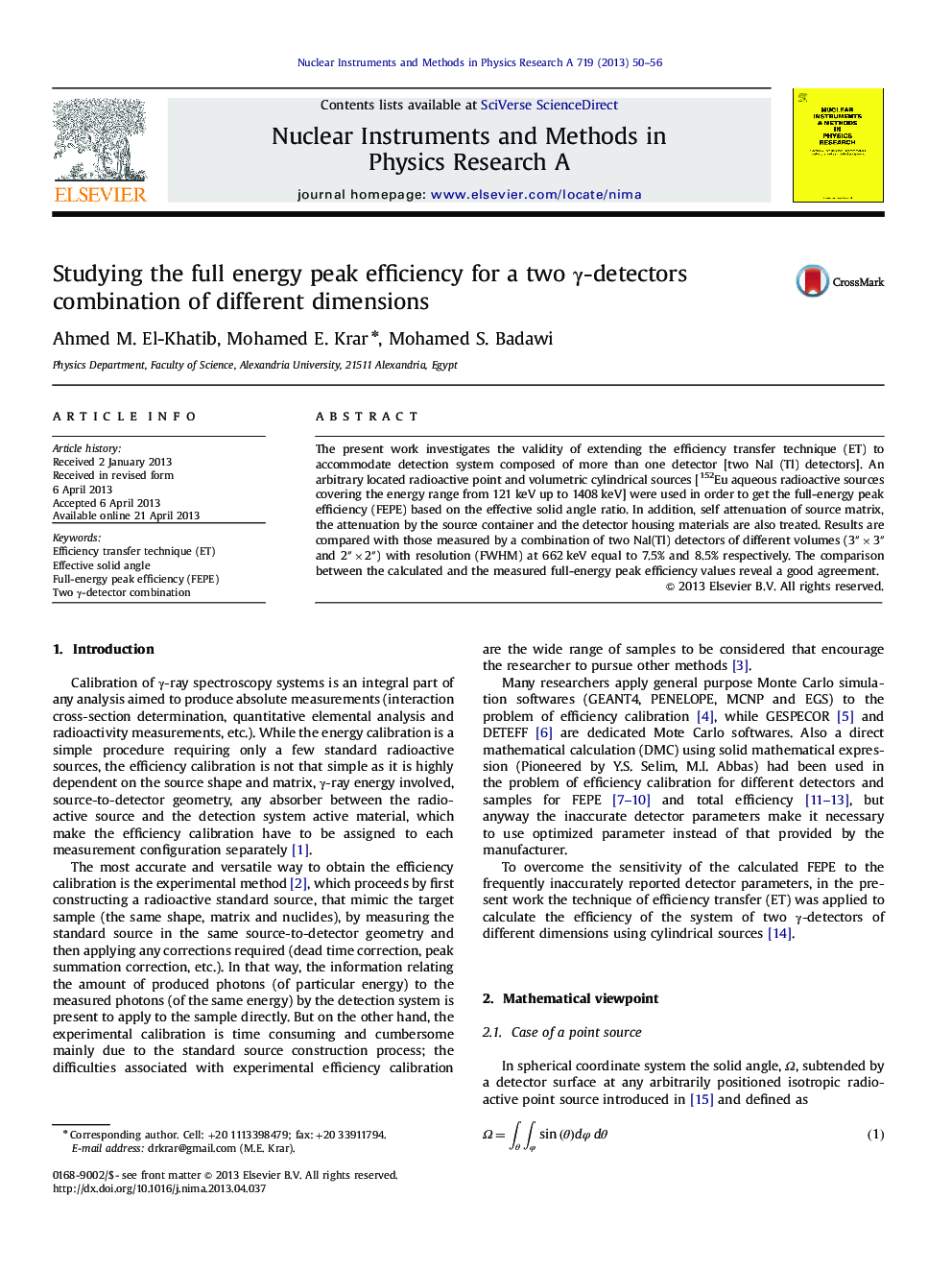| Article ID | Journal | Published Year | Pages | File Type |
|---|---|---|---|---|
| 1823026 | Nuclear Instruments and Methods in Physics Research Section A: Accelerators, Spectrometers, Detectors and Associated Equipment | 2013 | 7 Pages |
•Extending efficiency transfer to multi-detectors system was introduced.•Derivation of effective solid angles for point and cylindrical sources used.•The source, its container, holder and end-cap was all taken into consideration.•152Eu aqueous sources covering energy from 121 up to 1408 keV were used.•Good agreement between measured and calculated efficiencies was achieved.
The present work investigates the validity of extending the efficiency transfer technique (ET) to accommodate detection system composed of more than one detector [two NaI (Tl) detectors]. An arbitrary located radioactive point and volumetric cylindrical sources [152Eu aqueous radioactive sources covering the energy range from 121 keV up to 1408 keV] were used in order to get the full-energy peak efficiency (FEPE) based on the effective solid angle ratio. In addition, self attenuation of source matrix, the attenuation by the source container and the detector housing materials are also treated. Results are compared with those measured by a combination of two NaI(Tl) detectors of different volumes (3″×3″ and 2″×2″) with resolution (FWHM) at 662 keV equal to 7.5% and 8.5% respectively. The comparison between the calculated and the measured full-energy peak efficiency values reveal a good agreement.
